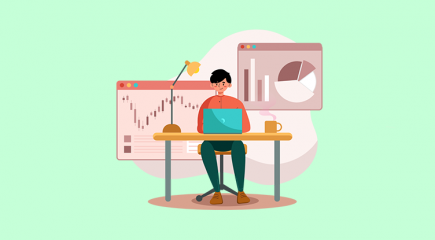The premium is the price that the option holder pays to buy options (for call contracts) or sell options (for put contracts) at a fixed rate when the term of the contract expires. At the same time, the premium is the price that the option writer receives for the obligation to buy or sell the asset in the case the holder of the contract decides to exercise their right.
Option prices are charged per contract purchased, for example, an investor decides to buy a call option for a stock, at a strike of $50, the investor gets offered that call for a premium of $4. The investor decides to buy one contract, which controls 100 shares of the stock, the investor would pay $400 in total.
Key Points
- The premium on an option is the market price at which an option contract is currently valued.
- The premium has two components, intrinsic and extrinsic value.
- The premium will get more expensive, the higher the time-lapse of the contract, and the volatility of the underlying asset is.
Understanding Option Premium
Option writers use the premium as a way to protect themselves in the case the asset price goes in an unfavorable trend. They calculate the premium price in such a way that makes it very unlikely for his counterpart to profit from his investment. Sophisticated traders typically use the premiums to make extra money from their portfolios. Usually, they sell call contracts over equity that they already own. If an investor sold upside calls in a stock they already own, they would continue to generate income from those sales. If the stock moved above the strike price, they would still turn a profit, but they would have to turn over the stock that they sold the upside calls and from their inventory.
Factors of Option Premium
As previously stated, the premium has two components, intrinsic and extrinsic value.
Intrinsic Value
The intrinsic value, for option contracts, represents the price difference between the stock price and the strike price at the time of valuation. Only in the money options (ITM options) have intrinsic value. Out of the money, options (OTM options) have $0 intrinsic value as there is no such thing as a negative intrinsic value. The intrinsic value can only be measured at a specific period as “future intrinsic value” would be considered extrinsic value instead.
Extrinsic Value
The extrinsic value, also known as time value. It is measured by the difference between the option premium and the intrinsic value and represents the possibility that the option holder has that the underlying asset price moves favorably. As the contract approaches the expiration date, the extrinsic value will reduce accordingly.
The extrinsic valuation is affected by two factors, the time and the implied volatility of the underlying asset. The bigger the time-lapse of a contract is, the more difficult it is going to be to predict where the stock price of the underlying is going to land. Even if a market is predominantly bullish or bearish, that doesn’t mean it is going to stay that way for months or even years. As each day goes by the option contract will lose value due to time decay. The premium is also affected by the historical and implied volatility. The historical volatility measures how the price changes of an asset have behaved during his lifetime. The implied volatility represents how drastic the market thinks that the future price changes of the asset is going to be. The higher the volatility rate of an asset is, the more probability of having big price swings, thus high risk, which positively affects an options premium.
As the option contract moves closer to expiry, the effect that the extrinsic value has on the valuation of the option will get more negligible until it disappears at the expiration date.
How to Trade with Confidence
If you want to make trades with high probabilities of success, it is recommended to have an experienced trading coach with substantial experience with options. Having a professional options trader in your corner will allow you to see exactly how a seasoned veteran trades, what they look for, and the factors that really matter. Make confident and decisive decisions that will allow you to take your options trading game to the next level. Here investors are able to achieve trades that have a huge probability of success, while at the same time, defining an acceptable level of risk. Click here to apply expert research to your own portfolio.




